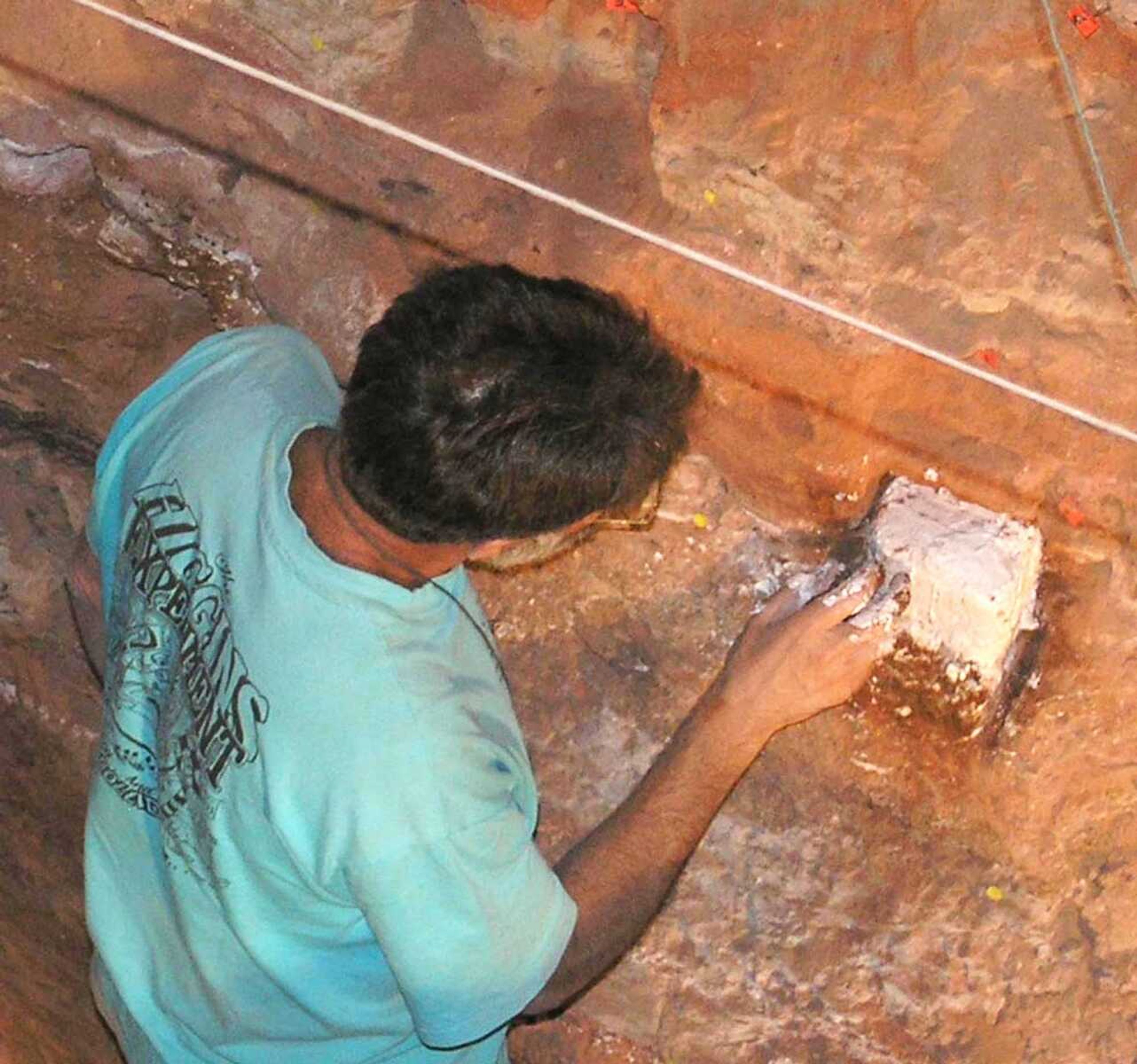Study: Our ancestors used fire a million years ago
\NEW YORK (AP) -- When did our ancestors first use fire? That's been a long-running debate, and now a new study concludes the earliest firm evidence comes from about 1 million years ago in a South African cave. The ash and burnt bone samples found there suggest fires frequently burned in that spot, researchers said Monday...
NEW YORK (AP) -- When did our ancestors first use fire? That's been a long-running debate, and now a new study concludes the earliest firm evidence comes from about 1 million years ago in a South African cave.
The ash and burnt bone samples found there suggest fires frequently burned in that spot, researchers said Monday.
Over the years, some experts have cited evidence of fire from as long as 1.5 million years ago, and some have argued it was used even earlier, a key step toward evolution of a larger brain. It's a tricky issue. Even if you find evidence of an ancient blaze, how do you know it wasn't just a wildfire?
The new research makes "a pretty strong case" for the site in South Africa's Wonderwerk Cave, said Francesco Berna of Boston University, who presents the work with colleagues in the Proceedings of the National Academy of Sciences.
One expert said the new finding should be considered together with a previous discovery nearby, of about the same age. Burnt bones also have been found in the Swartkrans cave, not far from the new site, and the combination makes a stronger case than either one alone, said Anne Skinner of Williams College in Williamstown, Mass., who was not involved in the new study.
Another expert unconnected with the work, Wil Roebroeks of Leiden University in The Netherlands, said by email that while the new research does not provide "rock solid" evidence, it suggests our ancestors probably did use fire there at that time.
The ancestors probably brought burning material from natural blazes into the cave to establish the fires, said Michael Chazan of the University of Toronto, a study author. Stone tools at the site suggest the ancestors were Homo erectus, a species known from as early as about 2 million years ago.
The scientists didn't find signs of fire preparation, like a hearth or a deep pit. But Berna said it's unlikely the fires were simply natural blazes, such as from lightning strikes.
That's because the evidence shows repeated fires burned deep inside the cave, he said. The cave entrance is almost 100 feet away, and because of changes in the cave over the past 1 million years, the entrance was apparently even farther away when the fires burned, he said. In contrast, he said, the bones at Swartkrans could have been burned by a natural fire in the open before winding up in that cave.
The scientists also found no sign that the Wonderwerk cave fires were ignited by spontaneous combustion of bat guano, which they called a rare but documented event.

Berna and colleagues describe animal bones that show discoloring and a chemical signature of being heated. They also report microscopic bits of ash in excavated dirt from the cave, indicating burning of light material like leaves, grasses and twigs. And they found evidence of heating in samples of fractured stone.
Several lines of evidence suggest the material was heated within the cave rather than blown or washed in from outside.
It's not clear what the fires were used for. While the burnt bones suggest cooking, the ancestors might have eaten the meat raw and tossed the bones into the fire, Berna noted. Other possible uses might be warmth, light and protection from wild animals, he said.
In a statement to The Associated Press, Roebroeks and Paola Villa of the University of the Witwatersrand in Johannesburg, South Africa, and the University of Colorado Museum in Boulder, said that while the new study probably demonstrates use of fire, they'd like to see signs of preparations like a hearth to be sure.
In any case, they said, the work does not show that human ancestors were using fire regularly throughout their range that long ago. In a paper published last year, they traced such habitual use of fire to about 400,000 years ago.
Berna said researchers will return to the Wonderwerk cave this summer and pursue hints that fires were used there even earlier than their paper suggests.
------
Online:
Journal website: http://www.pnas.org
Wonderwerk Cave information: http://bit.ly/H4sDS4
------
Malcolm Ritter can be followed at http://www.twitter.com/malcolmritter
Connect with the Southeast Missourian Newsroom:
For corrections to this story or other insights for the editor, click here. To submit a letter to the editor, click here. To learn about the Southeast Missourian’s AI Policy, click here.










